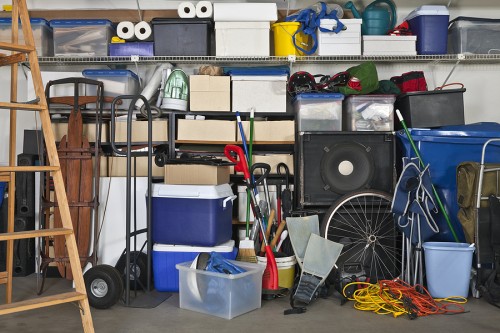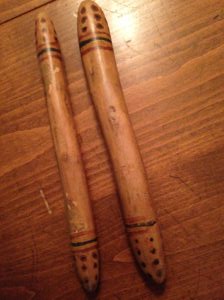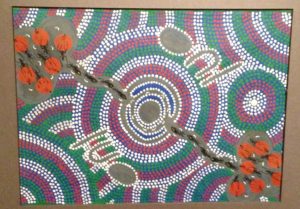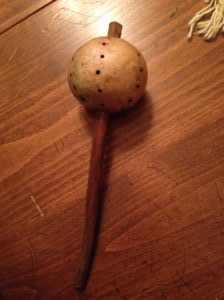Decluttering: are we our things?

I’m an imperfect practitioner of decluttering. I try, but it’s hard. Which today raised these questions in my mind: Are we our things? Do our possessions define us?
For some, the answer may be yes. I think that was true of me for many years.
But perhaps the “things” evoke memories and teachings that go far beyond the physical representations.
I’m much less attached to stuff than I used to be, but I still struggle with my annual decluttering extravaganza.
What does our stuff mean to us?
When people walk into my home, they can see indigenous art from all over the world. It’s clear what I love, what speaks to me.
And what would happen if I lost them all? I’d be sad, but not devastated because it’s the spiritual practices behind these things that give them their beauty in my eyes. And that is something that can stay with me.
 These items serve as reminders of cultures that preserve the planet and honor all life. Simply painted clap sticks [musical instruments] from the Australian outback remind me that two sticks can make a musical instrument.
These items serve as reminders of cultures that preserve the planet and honor all life. Simply painted clap sticks [musical instruments] from the Australian outback remind me that two sticks can make a musical instrument.
My friend Emmy once brought me two sticks she found that had been gnawed by beavers on each end. They became beaver clap sticks during our monthly full moon drummings. Nature makes its own instruments.
I purchased four Aboriginal dot paintings from aborigines on the side of the road in the middle of the Australian desert. The dots represent energy and the paintings serve as a teaching that everything in the world is energy and is, therefore, connected.
 I have quite a few drums from around the world. Drums represent the heartbeat of mother earth. The skins and frames came from animals and trees that were once alive. And their energy still resides in the drums.
I have quite a few drums from around the world. Drums represent the heartbeat of mother earth. The skins and frames came from animals and trees that were once alive. And their energy still resides in the drums.
Native American elders teach that, in the traditional way, gourd rattle are made by adding tiny pebbles from big ant hills. You know you have the right number of pebbles inside when the crickets chirp in time with your rattling. This truly puts you and nature in tune with one another.
It’s also taught that the sound of the rattle represents lightening, the thunder beings. What a wonderful reminder of the natural world.
My great-grandmother’s tea service: sometimes I use them in tea parties with girlfriends to just celebrate sister-hood and conversation. I feel my ancestor’s presence when we do it.
Small items from my travels around the world remind me that we are all one big community.
Yet, if I lost them all, I would still have the memories and the teachings. And that’s what’s most important.
This is the time of year when I go through my house and declutter – getting rid of things I haven’t used in over a year.
It’s tempting to hold on – to everything. Because each item has been used and has some little piece of my, and perhaps my ancestors’, energy in them.
But if I no longer use it, why keep it? These old items keep us stuck; stuck in old patterns and beliefs. The more we shed, the more room there is for new and good things to come in.
It’s important to have faith that when you let go of the old, new and good things will come in. You have to trust that the cycle of life applies to our stuff, too.
Look around your home; what do you have? What does it mean to you? Family heirlooms keep your ancestors alive in your presence. But if you lost them, you’d still have the memories, which may be the most important thing of all.
Postscript: For an excellent article on the health benefits of decluttering, check out The Science of Staying Organized.
Molly Larkin is the co-author of the international best-seller “The Wind Is My Mother; The Life and Teachings of a Native American Shaman” and other books on health. She is passionate about helping people live life to their fullest potential through her classes, healing practice and blog at www.MollyLarkin.com

